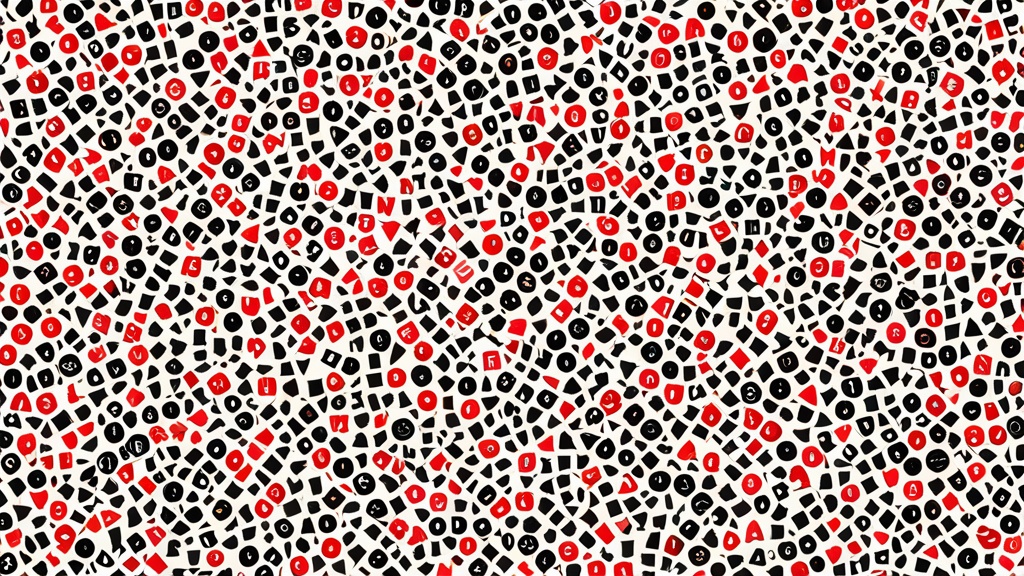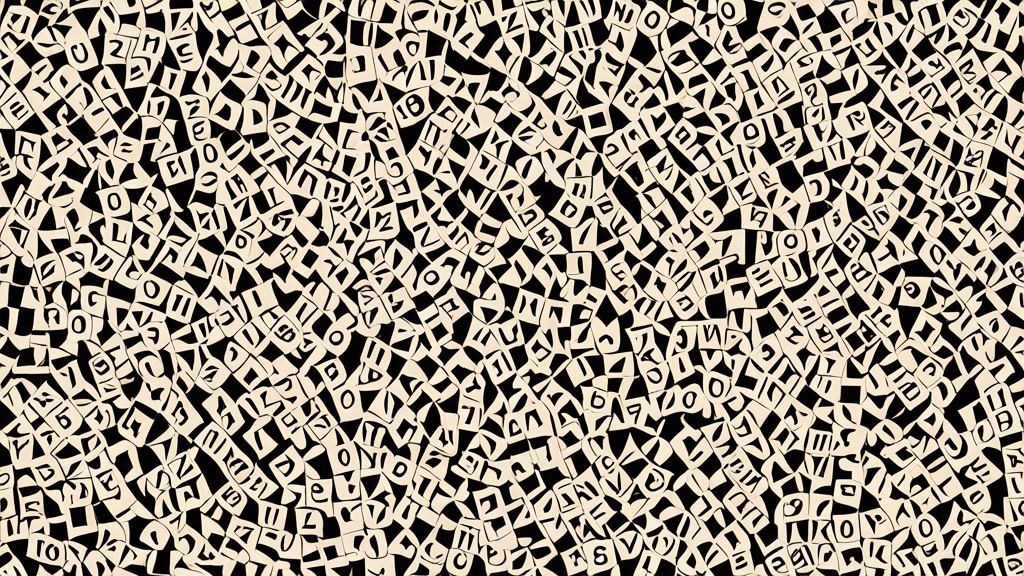I’ve spent more than ten years wrangling things we don’t know. Names that are missing. Dates that are fuzzy. Data cells that stare back at me, blank and a little smug. So yeah, I have opinions on the abbreviation for unknown. In my experience, the right shorthand saves you time, saves your team’s sanity, and stops a lot of “Wait, is that a zero or a blank?” drama. I’ve always found that simple cues like TBD, TBA, N/A, or even old-school Latin like nomen nescio, plus everyday stand-ins like John Doe, do more than fill space. They keep the story honest. If you’ve ever fought a spreadsheet that thinks “unknown” is a number (it isn’t), you know the pain.
Why we keep slapping labels on the unknown

We label what we don’t know because leaving holes is scary. Also because people argue less when they can point at letters. In my head, it’s like this: you either say “I don’t know” in a neat, tiny code or you invite a 20-thread email about nothing. I pick the code.
Over the years, I’ve used many shortcuts. Some work everywhere. Some only in certain jobs. Some will make your editor smile. Others will make your data team cry. And yes, I’ve done both. Repeatedly.
The greatest hits of “I don’t know” (and when to use them)
Everyday stuff: N/A, TBD, TBA, TBC
Here’s the basic starter pack. If you only remember four, make it these.
| Abbrev | Stands for | Use it when | Quick example | Don’t confuse with |
|---|---|---|---|---|
| N/A | Not Applicable | The thing doesn’t apply at all | Middle name on a form that doesn’t have one | “Unknown” (which means it could apply, but you don’t know) |
| TBD | To Be Determined | You’ll pick later | Meeting time we haven’t locked | TBA (which is more “we’ll announce it soon”) |
| TBA | To Be Announced | You know it, you just can’t tell yet | Concert lineup kept secret on purpose | TBD (still figuring it out) |
| TBC | To Be Confirmed | It’s penciled in, not ink | “June 12, TBC” for an event date | TBD (no decision yet) |
If you want a wiki-level breakdown of those three cousins, peek at this quick page on TBA, TBD, TBC. It’s short and clean.
When a person’s name is missing: John Doe, Jane Doe, and N.N.
Sometimes the unknown thing is a person. In law and hospitals, “John Doe” and “Jane Doe” are the classic placeholders. In old-school records, I’ve seen “N.N.” which is short for the Latin nomen nescio—“I do not know the name.” Feels fancy. Works fine. In manuscripts or art, if we flat-out don’t know who made it, it might be logged as an anonymous work. Which sounds mysterious, but usually it means someone lost the label a hundred years ago.
In math, data, and code: X, NaN, null, and friends
Math students meet the unknown as “x.” Then “y.” Then “oh no, now it’s theta.” Meanwhile, in spreadsheets and databases the unknown becomes “null” or “NaN” (Not a Number). In my experience, using N/A in a spreadsheet cell is fine for humans, but machines can choke on it. If you’re in data land, follow the team rules. Use true nulls or a shared code like “UNK” or blank. Ask before you invent your own cute trick. Future you will thank you.
Publishing and media: TK is king
Editors use “TK” (to come) inside drafts to mark missing facts, quotes, or sources. It’s fast to search. It almost never appears in real words, so you can hunt it down before publishing. I’ve typed “TK date” or “TK source” more times than I can count. If I hand you a draft without any TK, check if I panicked and guessed. That’s worse.
Quick reference: what to write when you don’t know
| Situation | What I write | Why | Example |
|---|---|---|---|
| Field doesn’t apply | N/A | Stops people from thinking it’s missing | “Maiden Name: N/A” for a person who never changed names |
| Decision not made yet | TBD | Keeps it open but honest | “Venue: TBD” |
| Decision made, secret for now | TBA | Signals “we know, you’ll know later” | “Headliner: TBA” |
| Likely info, needs confirm | TBC | Reminds you to check later | “Price: $49, TBC” |
| Unknown person’s name | John Doe/Jane Doe or N.N. | Standard placeholders | “Reported by John Doe, witness unknown” |
| Missing date in text | TK date | Easy to search before publish | “The meeting was held on TK date.” |
| Data system expects a number | null / leave blank | So the system can handle it | “Temperature: null” not “N/A” |
Little traps that bite hard
- Using N/A when you mean “unknown.” N/A means “does not apply.” If it could apply but you don’t know, don’t use N/A. Write “unknown,” leave it blank per policy, or use a code like “UNK.”
- Guessing. I get it. Your brain wants closure. Mine too. But if you guess a date, someone will print it on a poster, and now it’s real. Don’t gift-wrap mistakes.
- Letting auto-correct “fix” your codes. I once watched a word processor “helpfully” change TBC to TBS. Suddenly our event was sponsored by a cable channel. Great.
- Mixing language across teams. Legal says “John Doe,” research says “N.N.,” data says “UNK.” Pick one in a shared doc. Add a legend if you must.
Real-life messes I’ve seen (and what I learned)
The “blank means zero” disaster
I worked with a team that treated blank as zero. Sales looked flat, then “fell off a cliff.” No, we had missing numbers. Not zeros. Those are different planets. We switched to a proper null and fixed the charts. Also fixed everyone’s mood.
The mystery speaker who was never real
We marked a conference speaker as TBA. Weeks went by. People assumed it was a celebrity. It was not. It was “we forgot to ask anyone.” We now use TBD for “we’re still picking,” and TBA only when we actually know but can’t say yet. The crowd got less mad after that.
The case of the “anonymous” author
Archive note said “anonymous.” Cool. But was the person unknown or hiding by choice? We checked the museum record and found it was just anonymous work—unknown author, not a secret identity. Small words, big difference.
People love Latin. Use it, don’t abuse it.
Latin abbreviations feel impressive. Sometimes they’re useful. Nomen nescio is crisp for “name unknown.” Et al. saves space when a paper has 22 authors named Alex. Circa says “around this date” without drama. But don’t toss Latin into a form for school enrollment. Keep your readers in mind. If it’s not a history book, plain English wins.
If you want to browse common Latin short forms, this list of Latin abbreviations is a handy refresher. Skim it, pick two you’ll actually use, and call it a day.
How I pick the right label
I keep it boring and consistent. Here’s my mental checklist.
- Does it apply at all? If not, N/A.
- Does it apply, but I don’t know yet? If yes, “unknown,” TBD, or a system code like UNK/null.
- Is it decided, but secret? TBA.
- Is it a soft hold? TBC.
- Is it a name? John Doe/Jane Doe or N.N. depending on the context.
When I pick an abbreviation for unknown in a shared doc, I leave a tiny legend at the top. Two lines, max. “Legend: TBD=to be determined, TBA=to be announced, TBC=to be confirmed, N/A=not applicable, UNK=unknown.” No one reads docs, but they will read that. It saves me from Slack pings.
Cross-domain cheat sheet
Different fields love different codes. Here’s the fast map I share with interns.
| Domain | People | Dates | Values/Numbers | Notes |
|---|---|---|---|---|
| Legal/Medical | John Doe/Jane Doe, N.N. | TBD/TBC | — | Privacy rules matter; avoid guessing |
| Publishing | N.N. in academic contexts | TK date | — | TK = “to come,” easy to search |
| Data/Analytics | — | — | null, NaN, UNK | Pick a single missing-data code |
| Events/Marketing | Speaker TBA/TBD | TBD, TBA, TBC | — | Be honest which state it’s in |
| Education/Forms | Unknown, N/A (if not applicable) | TBD | N/A or leave blank per policy | Plain language is kind |
Stuff vendors and labels do that bugs me (a little)
I see “proprietary blend” a lot on labels. That’s “we know but won’t tell.” Fine. But say so clearly. Don’t hide behind weird codes. If you’re curious about a trendy packaging angle, I wrote about honey packs a while back—lots of tiny servings, lots of tiny questions. Short version: labels matter, especially when people actually eat the thing.
Small style rules that make big peace
- Write “Unknown” with a capital U in forms if it’s an allowed entry. It signals “this is a choice,” not an error.
- Avoid mixing hyphens and slashes in home-brew codes like “U/N” or “unkn.” You’re not saving time. You’re saving confusion for later.
- If a field is sensitive (age, health), don’t guess. Leave it blank per policy and log “unknown” in notes. Protect people.
- If you publish online, search your draft for TK, TBD, and “???”. Yes, I once shipped a page with “??? price.” Yes, the internet noticed.
A few niche bits, because I’m me
Ranges and “circa”
If a date is fuzzy but close, “circa” (or “c.”) is a kind, honest label. “Built c. 1900” says “don’t fight me on the exact year.” It’s polite. It ages well.
Unknown vs. uncredited
Unknown means we don’t have the info. Uncredited often means we removed the name on purpose (privacy) or the original source didn’t list it. Use the right word. People care. It’s their work.
When the system forces a value
Some forms block blanks. If you must enter something, and there’s no official code, write “Unknown” in plain English. Then push for a better form later. We all deserve better forms.
Let’s untangle some look-alikes
- TBD vs. TBA: TBD is “we haven’t decided.” TBA is “we decided, we just can’t say yet.”
- TBC vs. TBD: TBC is “we think this is it; need final confirm.” TBD is “no clue yet.”
- N/A vs. Unknown: N/A means it does not apply. Unknown means it does apply, but we don’t have the info.
- Anonymous vs. Pseudonymous: Anonymous is no name given. Pseudonymous is a fake name given on purpose.
My tiny rant about search and tags

I tag unknowns in files and notes. “UNK” at the end of a filename is ugly but useful. Same with “TBD” in a calendar item. I also keep a single source of truth. A doc called “status” with a list of all the unknowns, who owns them, and due dates. Low tech. High sanity.
Yes, sometimes you need Latin, sometimes you need plain words
In a museum label, “Artist: unknown” might feel blunt. “Artist: anonymous” could be right if the creator chose not to be named. Or use the Latin if that’s the house style. Read the room. Or better, read the style guide. If none exists, make a one-page one. Then be the hero who shared it.
Why this matters more than it looks
These little codes shape decisions. If a budget field is N/A, finance stops asking. If it’s TBD, they start planning. If a patient name is N.N., privacy rules kick in. If a lab cell is null, the chart shows uncertainty. No drama, just truth.
Some words I use instead of codes (when humans will read it)
- Unknown
- Not yet decided
- To be confirmed
- To be announced
- Not applicable
This is me choosing clarity over flexing jargon. Yes, I love a good abbreviation. But I love being understood more. If your reader is 13, use words.
What I think about picking an abbreviation for unknown in mixed teams
Keep it simple. In my experience, three codes cover 90% of life: N/A, TBD, and Unknown. Add TBC and TBA only if your team really needs that nuance. If you drown people in codes, they start guessing. Guessing breaks things.
How I explain this to students
I say: If you don’t know, say you don’t know. Use a short, clear sign so others see it. Don’t hide the gap. Don’t make up facts. And if you learn the answer later, go back and fix the label. You’re allowed to be wrong. You’re not allowed to stay wrong out of pride.
Common questions I get in DMs
- “Can I use TBD for a price?” Yes, but if you accept pre-orders, say “Price TBD” and give a date you’ll confirm. People hate mystery bills.
- “Is N/A rude?” It can be if overused. If it truly doesn’t apply, it’s fine. If you’re dodging the question, people can tell.
- “Should I use John Doe in school reports?” Only if your teacher or the format says so. “Unknown” is usually clearer for school work.
- “What about leaving it blank?” Great in data systems that understand blanks. Risky in forms where people think you missed it.
- “Is there a master list somewhere?” The web has tons. Start with the page on N/A or the overview of TBA/TBD/TBC, and browse the Latin abbreviations if you want the classics.
Edge cases that always make me squint
- Phone numbers: Use “Unknown” if you don’t have it. Don’t type “000-000-0000.” That breaks real systems.
- Dates on old photos: Use “c. 1990” if close. If not, “Unknown date” is better than a wild guess.
- Author lines: “Uncredited” if the source didn’t list a name. “Anonymous” if the piece was published that way. “Unknown” when the info is missing and might exist elsewhere.
- Event schedules: Use TBD for a time you’ll choose. Use TBA if the artist asked you to wait to announce. Use TBC when you’re 90% there but the contract isn’t signed.
Short list of do’s and don’ts
- Do keep a legend for your team’s codes.
- Do search-and-destroy TKs before you go live.
- Do pick codes that your tools understand.
- Don’t use N/A as a lazy “I don’t know.”
- Don’t invent weird shorthand no one else gets.
- Don’t be afraid to write “Unknown” in plain English.
A note about context and trust
When you mark something unknown, you’re telling people, “You can trust the rest.” That little honest flag earns you credit. It’s not weakness. It’s the opposite.
One last nerdy aside (then I’ll stop)
If you’re deep in standards, check your house style guide. Libraries, labs, and courts often have strict rules on how to mark unknowns. The right code might not be the one you like. It’s the one they accept. If there’s no rule, write one page and share it. Promote it shamelessly. Get it blessed by someone with a title. Congratulations, you just saved future arguments.
Anyway. This stuff seems small until it isn’t. Pick a clear label, use it well, fix it later when you know more. That’s the game. Next time you’re tempted to type “maybe June 12ish?” — breathe, write TBC, and move on. Your future self will want to hug you.
FAQs (from real people who are tired and busy)
- What’s the easiest way to say I don’t know on a form? — I use “Unknown” or N/A if it truly doesn’t apply. If it’s a date or time, I’ll write TBD.
- Is it okay to put TBD on a public flyer? — Yes, but only for a short time. Add a line like “Details TBD, announced next week” so folks aren’t left guessing forever.
- What do I do if my spreadsheet hates text like N/A? — Use a proper null or a blank per your data rules. Ask your data person. They’ll have Opinions, capital O.
- Should I use Latin like nomen nescio for school? — Only if your teacher likes it. “Name unknown” is usually clearer and friendlier.
- Can I write “anonymous” when I don’t know the author? — Careful. “Anonymous” can mean “chose not to be named.” If you truly don’t know, write “unknown.”
Oh, and if you ever find yourself googling the abbreviation for unknown at 2 a.m., same. Been there. Twice.

Hey, I’m Lucas. My blog explores the patterns and connects the dots between tech, business, and gaming. If you’re a curious mind who loves to see how different worlds intersect, you’re in the right place.




Love the variety of abbreviations to represent unknowns! Definitely improves clarity and efficiency in data management.
Love using shorthand for unknowns- less confusion and drama. TBD, TBA, N/A are lifesavers! Plus, Latin is always fun.
What’s your go-to abbreviation for unknowns in data wrangling? Is it N/A, TBD, TBA, or something else?